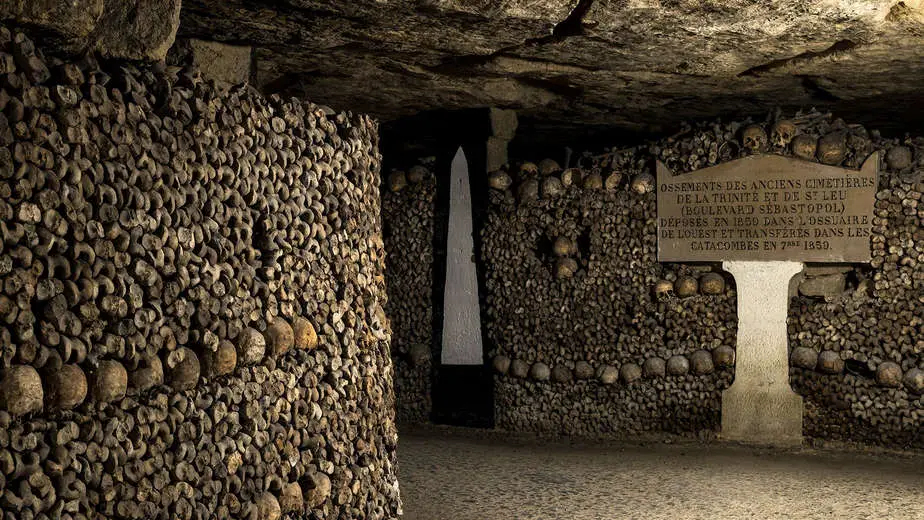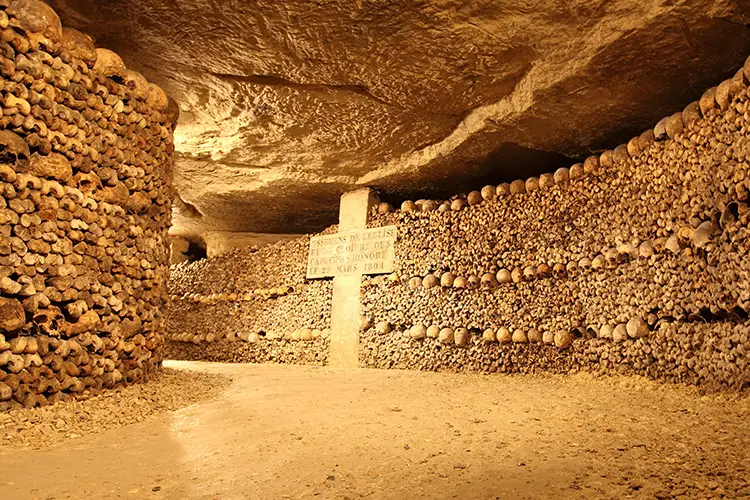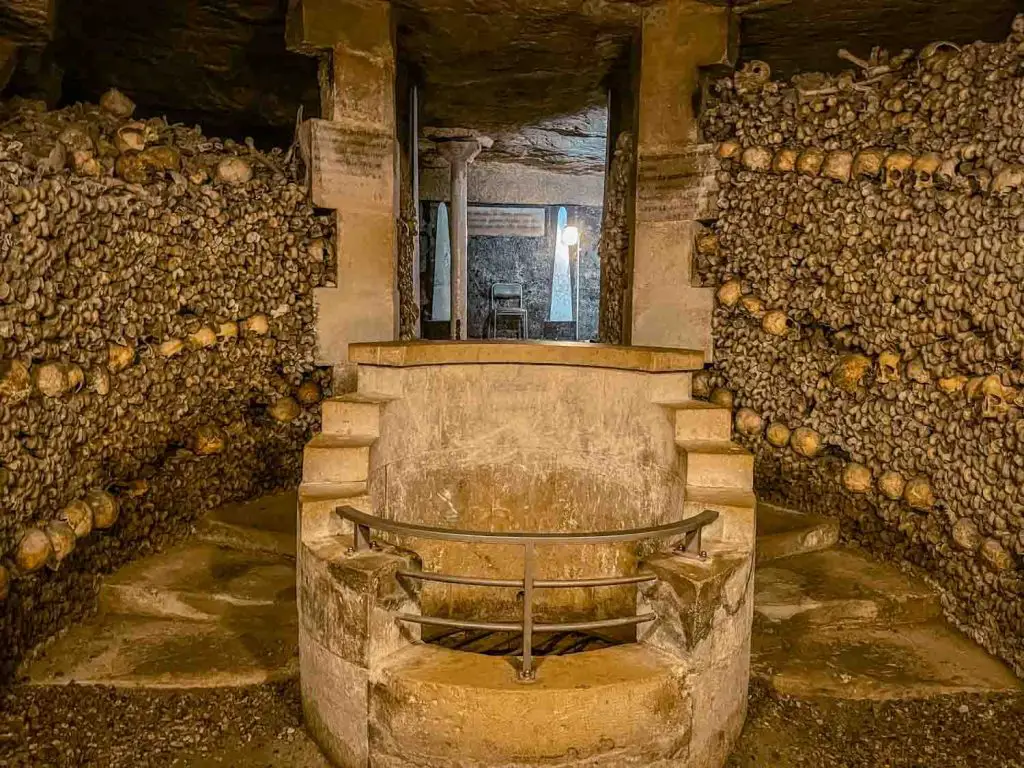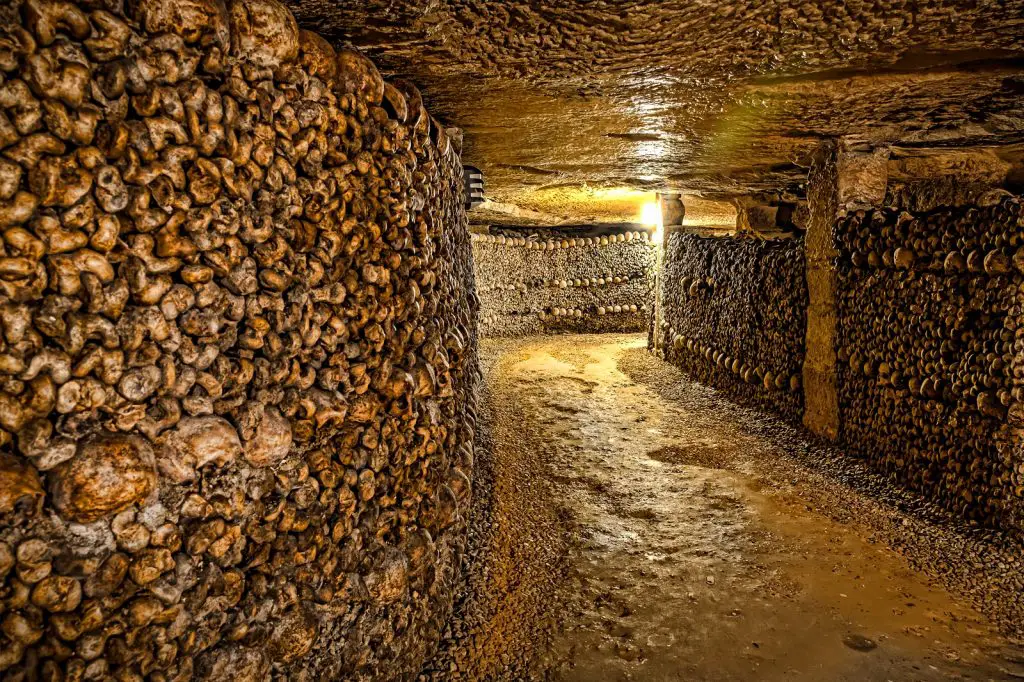The Catacombs of Paris, also known as the “Catacombes de Paris,” are a fascinating underground network of burial chambers located beneath the streets of Paris, France. These catacombs hold the remains of around six million people and have become a popular and intriguing tourist attraction. Let’s delve into some captivating facts about the Catacombs and uncover the mysteries that lie beneath the City of Light.
The Origins of the Catacombs

The Catacombs of Paris have their beginnings in the vast quarries that supplied the city with limestone since Roman times. As the city grew, these underground quarries became unstable, leading to collapses and accidents. To address this problem, Louis XVI ordered the consolidation of the quarries into a more organized and secure underground network.
In the late 18th century, the abandoned quarries were transformed into ossuaries to solve the issue of overflowing cemeteries in Paris. The remains from different cemeteries were relocated to the Catacombs, creating a unique underground resting place.
During the French Revolution, the Catacombs served as a refuge and hiding place for revolutionaries. It is said that they even held secret meetings and planned their strategies in the dark chambers of the underground tunnels.
The Construction and Design

Building the Catacombs required meticulous planning and engineering. Skilled workers carved out the tunnels using mining techniques and supported them with pillars made from limestone blocks extracted from the quarries themselves.
Spanning over 300 kilometers, the Catacombs form a labyrinthine network of tunnels and chambers. Some areas are wide enough for visitors to explore, while others are narrow and winding, creating an atmosphere of mystery and adventure.
Although primarily an ossuary, the Catacombs also feature architectural elements like ornamental arches and inscriptions. The arrangement of skulls and bones within the chambers creates a hauntingly beautiful display, resembling macabre artwork.
The Purpose of the Catacombs

The original purpose of the Catacombs was to address overcrowding in cemeteries and provide a more sanitary and organized burial solution. The catacombs served as a final resting place for the deceased, promoting public health and safety.
Over time, the Catacombs evolved into an ossuary, with skeletal remains artistically arranged along the walls and corridors. This transformation added an eerie and captivating dimension to the underground complex.
The Catacombs hold historical significance as witnesses to various events, including the transfer of remains from mass graves during the French Revolution and the activities of resistance movements during World War II. They provide a unique perspective on Parisian history.
Legends and Mysteries

The Catacombs are surrounded by legends of ghostly encounters and paranormal activities. Visitors and explorers have reported unexplained sounds, eerie whispers, and even sightings of apparitions, adding to the mystique of the underground realm.
Rumors persist about hidden chambers and secret societies that exist within the Catacombs. While some believe these stories to be mere urban legends, others continue to speculate about the existence of underground communities.
Urban legends surrounding the Catacombs include tales of lost explorers who never returned, mysterious disappearances, and encounters with supernatural beings. These stories contribute to the aura of mystery that envelops this subterranean realm.
Tourism and Visitor Experience
In 1809, the Catacombs were opened to the public, offering a unique and intriguing attraction for visitors to Paris. Since then, millions of tourists have descended into the depths of the underground city to explore its captivating history and artistic displays.
Today, visitors can embark on guided tours that take them through a carefully curated section of the Catacombs. Along the way, informational displays and exhibits provide insights into the history, culture, and significance of this extraordinary underground world.
Due to the complexity and delicate nature of the Catacombs, there are rules and precautions in place to ensure the safety of visitors. These include following designated paths, refraining from touching the remains, and respecting the solemn atmosphere.
Preservation and Conservation Efforts
Preserving and maintaining the Catacombs pose significant challenges due to their immense size and the constant risk of deterioration. Factors like humidity, flooding, and the passage of time require ongoing efforts to ensure the long-term survival of this historical treasure.
Efforts are underway to restore and conserve the Catacombs, including reinforcing tunnels, restoring architectural features, and using modern technologies to monitor and mitigate potential risks. These initiatives aim to safeguard this unique heritage site for future generations.
Authorities continue to explore innovative methods for preserving the Catacombs, such as improved ventilation systems, advanced monitoring techniques, and the implementation of sustainable practices. Ensuring the long-term sustainability of the Catacombs remains a priority.
Impact on Art and Culture
The Catacombs have had a profound influence on art and culture, inspiring numerous authors, poets, and artists. They have been featured in literature, paintings, and films, serving as a source of inspiration for the eerie and mysterious.
The Catacombs have been prominently portrayed in popular culture, with movies like “As Above, So Below” and books like “The Phantom of the Opera” drawing inspiration from their haunting allure. They have also found a place in various musical compositions, further solidifying their cultural significance.
Artists have captured the essence of the Catacombs through their paintings, sculptures, and photographs. These artistic representations provide glimpses into the haunting beauty and historical significance of this subterranean realm.
Interesting Facts and Figures
- The Catacombs cover a distance of over 300 kilometers, making them one of the largest underground burial sites in the world.
- It is estimated that the remains of approximately six million people rest within the Catacombs.
- The Catacombs served as a refuge for the French Resistance during World War II.
- The temperature within the Catacombs remains a constant 14 degrees Celsius (57 degrees Fahrenheit) throughout the year.
- In 2004, a cinema was discovered in one of the uncharted sections of the Catacombs, complete with a fully equipped screening room.
- The Catacombs have been used as a location for various fashion shoots and artistic projects.
- In recent years, authorities have been addressing the issue of illegal entry and exploration of the Catacombs by imposing stricter security measures.
- The Catacombs attract approximately half a million visitors each year, making them one of the most popular tourist attractions in Paris.
- The underground complex consists of numerous chambers and galleries, each with its own unique ambiance and displays of bones and skulls.
Conclusion
The Catacombs of Paris offer a captivating journey into the depths of history, art, and humanity’s fascination with mortality. From their origins as quarries to their transformation into an ossuary and a renowned tourist attraction, the Catacombs continue to intrigue and mesmerize visitors from around the world. The legends, mysteries, and unique experiences associated with this underground realm make it a must-visit destination for those seeking a glimpse into the hidden side of Paris.